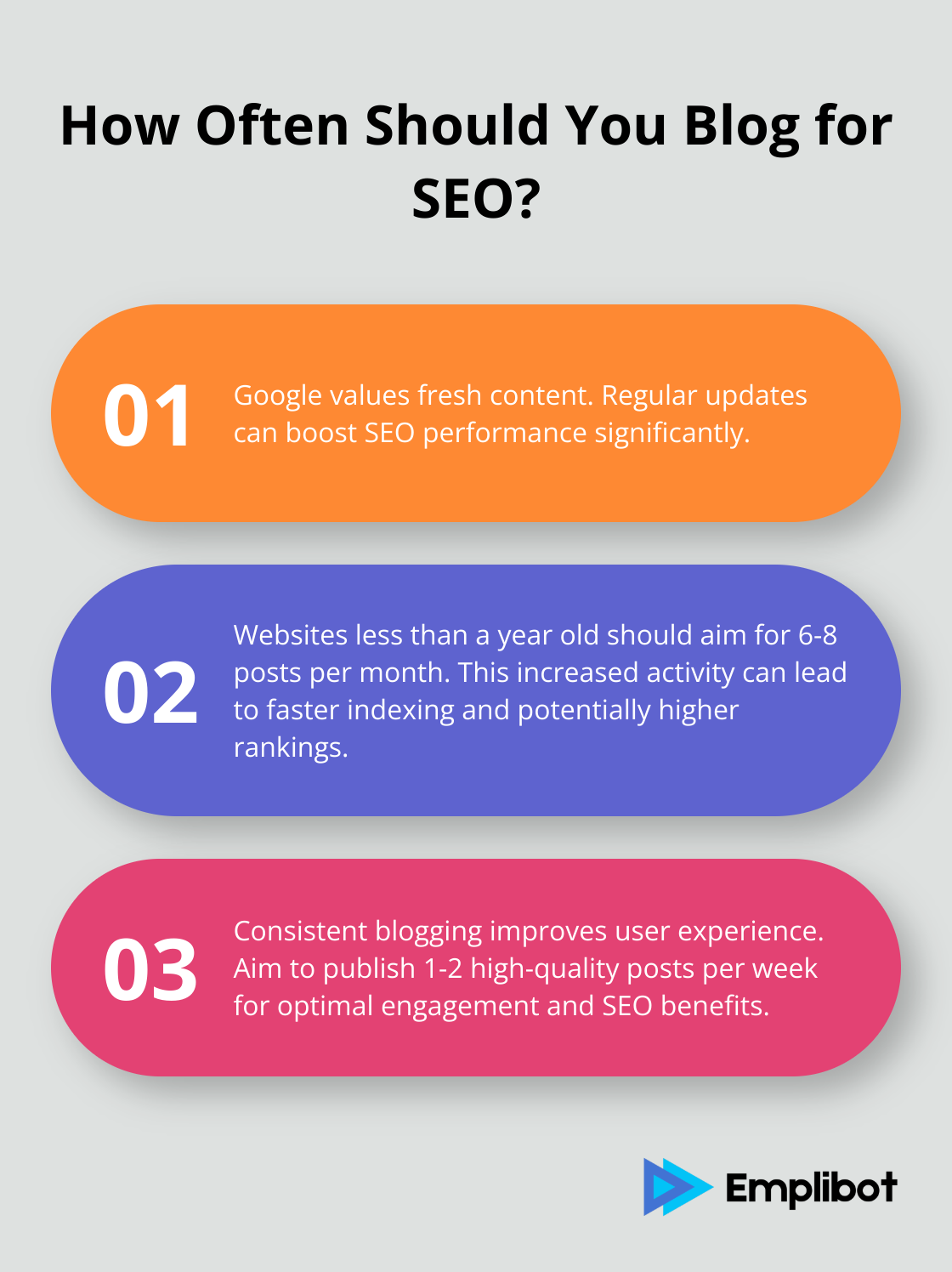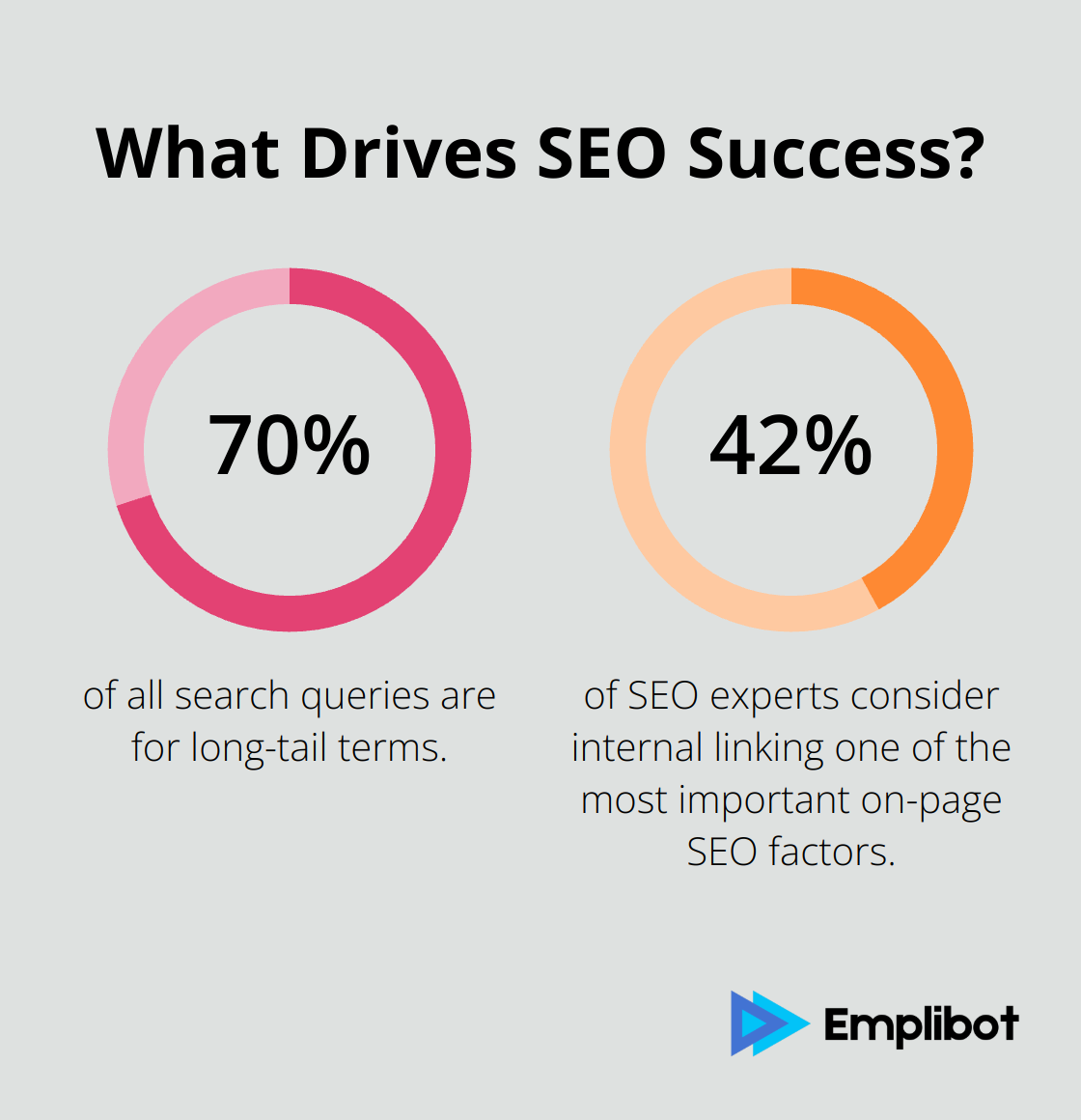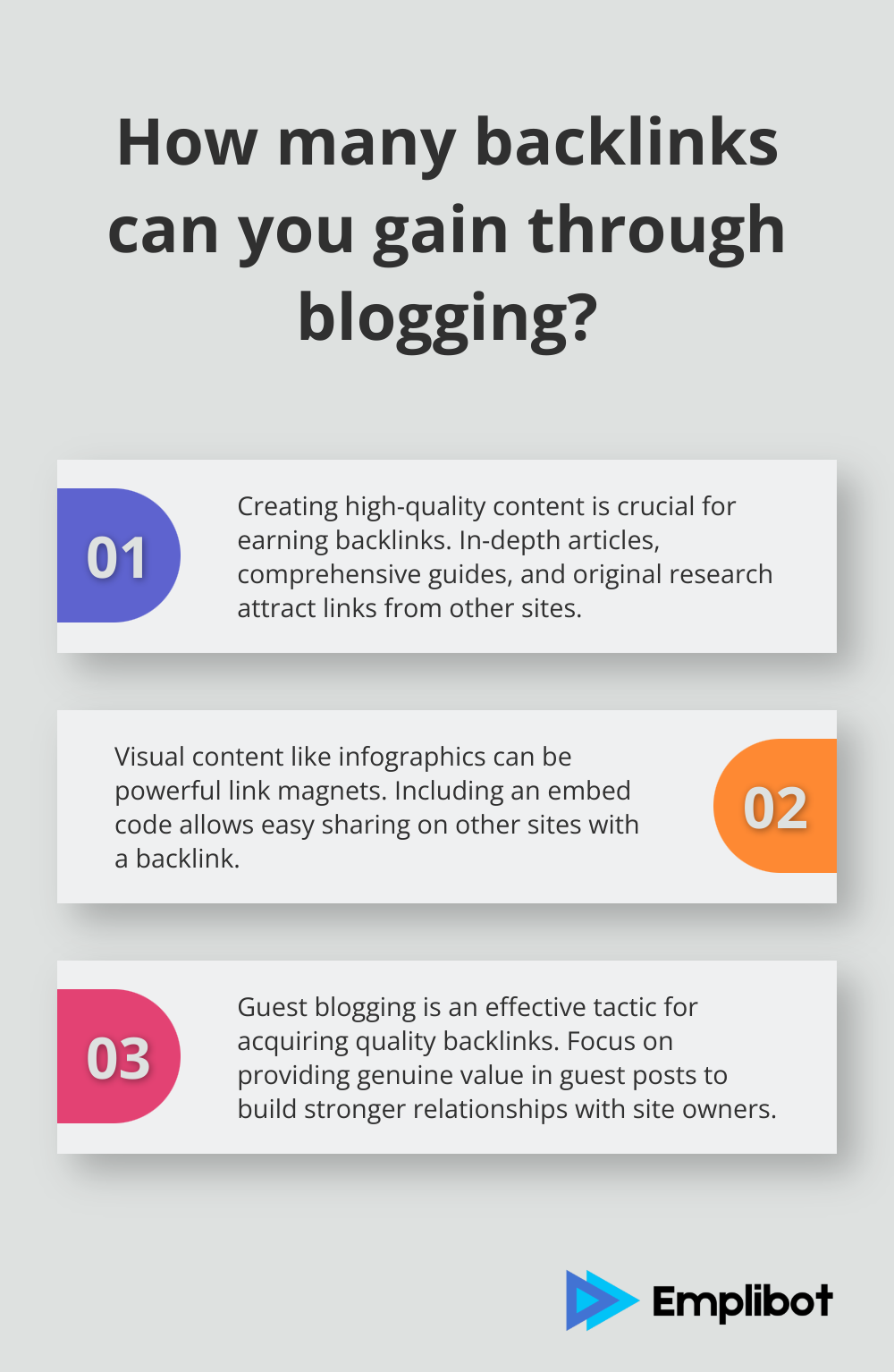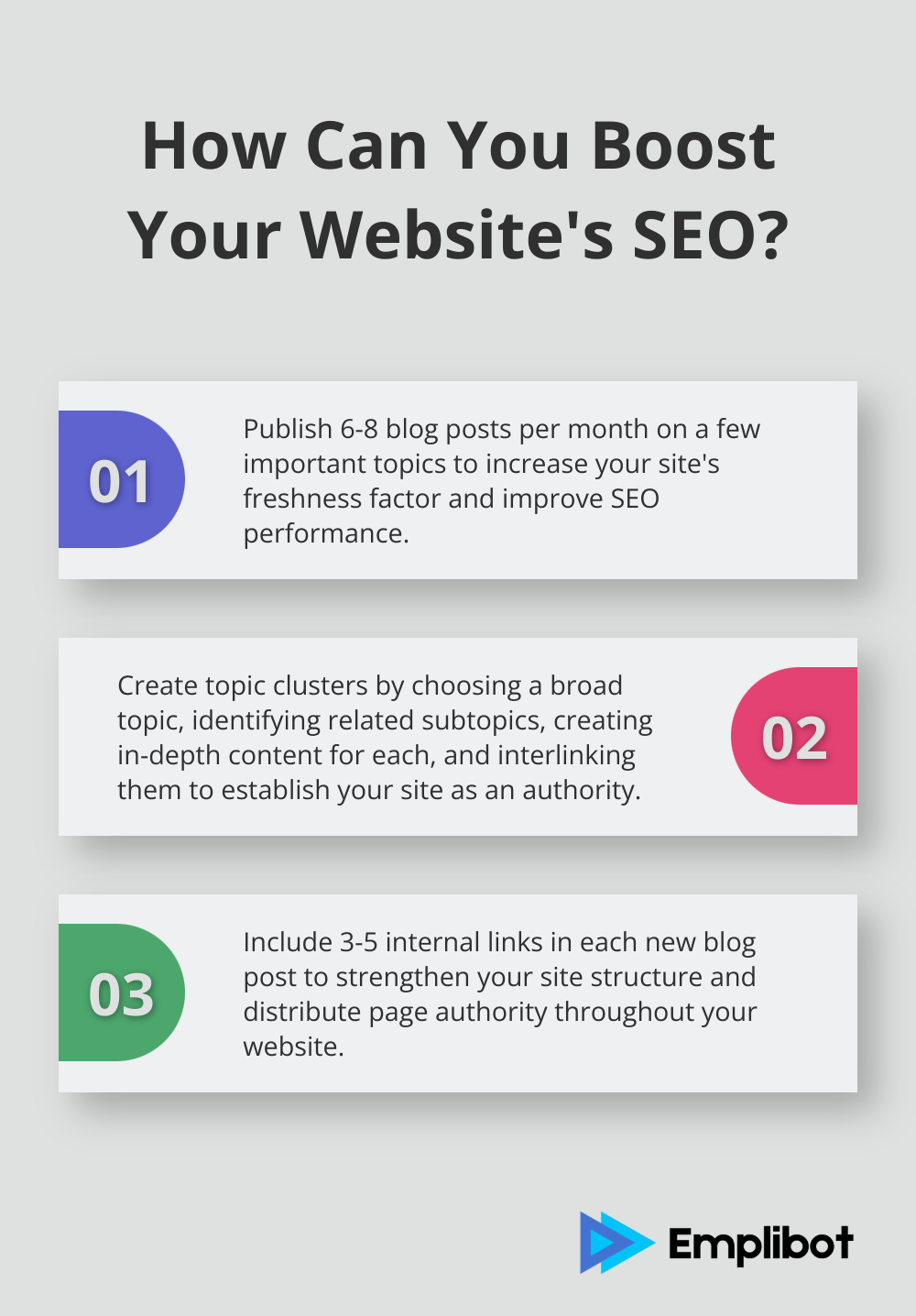Blogging is a powerful tool for boosting your website’s search engine optimization (SEO). At Emplibot, we’ve seen firsthand how consistent blogging can transform a site’s search rankings and visibility.
But how does blogging help SEO exactly? In this post, we’ll explore the key ways blogging impacts your search performance and provide actionable tips to leverage your blog for SEO success.
Contents
ToggleWhy Fresh Content Matters for SEO
Google’s Freshness Factor
Search engines love fresh content, and for good reason. Regular updates to your website with new blog posts can boost your SEO performance significantly. Google’s algorithm places a high value on recent, relevant content, known as the “freshness factor.” Through testing and experimentation, you could see if updating the freshness of your content has noticeable positive impacts on ranking.
Signaling Site Activity to Search Engines
When you blog regularly, you send a clear signal to search engines that your website remains active and continuously updated. This increased crawl rate can lead to faster indexing of your new content and potentially higher rankings. A HubSpot study suggests that if your blog isn’t at least a year old, you should aim to publish 6-8 posts a month around a few important and promising topics.
Enhancing User Experience and Engagement
Fresh content doesn’t just please search engines; it also improves user experience. Visitors are more likely to engage with and share recent, relevant content. This increased engagement can lead to longer time on site, lower bounce rates, and more social shares – all factors that can positively influence your SEO.
Actionable Tips for Maximizing Fresh Content
To maximize the SEO benefits of fresh content, consider these tips:
- Develop a consistent blogging schedule (try to publish 1-2 high-quality posts per week).
- Update and republish old content to maintain its relevance.
- Use tools like Google Trends to identify timely topics in your industry.
- Incorporate current events and recent data into your blog posts when relevant.

Quality should always be your top priority. One well-researched, in-depth post will likely outperform several shallow, hastily written articles in terms of SEO impact.
As we move forward, let’s explore how blogging serves as a powerful keyword optimization strategy, allowing you to target specific search terms and establish topical authority in your niche.
Mastering Keyword Strategy Through Blogging
Targeting Long-Tail Keywords
Long-tail keywords are specific phrases users search for. Over 70% of all search queries are for long-tail terms, and they tend to have higher conversion rates than generic keywords. Blogging allows you to target these valuable long-tail keywords effectively.

Instead of targeting a broad term like “digital marketing,” create a blog post focused on “how to create a digital marketing strategy for small businesses.” This approach captures more specific search intent and attracts users who are more likely to convert.
To identify effective long-tail keywords, use tools like Google’s Keyword Planner or Ahrefs. Look for keywords with decent search volume (100-1000 monthly searches) and low competition. Then, create in-depth, valuable content around these keywords.
Building Topic Clusters
Topic clusters are groups of interlinked content centered around a main topic. This strategy helps establish your site as an authority on specific subjects, which can boost your SEO performance. The topic cluster model is a way of organizing a site’s content pages using a cleaner and more deliberate site architecture.
To create a topic cluster:
- Choose a broad topic relevant to your business (the pillar content).
- Identify related subtopics (cluster content).
- Create in-depth content for each subtopic.
- Link all cluster content back to the pillar page and vice versa.
For instance, if you’re a fitness company, your pillar content might be about “weight loss,” with cluster content covering subtopics like “HIIT workouts for weight loss,” “meal planning for weight loss,” and “understanding metabolism.”
Strengthening Site Structure with Internal Linking
Internal linking is a key factor for SEO. It helps search engines understand your site structure and distributes page authority throughout your site.
When you create new blog posts, always look for opportunities to link to relevant existing content on your site. This not only helps with SEO but also keeps users engaged by providing additional valuable information.
A study by Databox found that 42% of SEO experts consider internal linking one of the most important on-page SEO factors. Try to include 3-5 internal links in each new blog post you publish.
The key to successful keyword optimization through blogging is consistency and quality. Publish well-researched, valuable content that targets specific keywords and fits into your overall content strategy regularly. This approach will significantly boost your SEO performance and drive more targeted traffic to your site over time.
Now that we’ve explored how to optimize your blog posts for keywords and structure your site effectively, let’s turn our attention to another powerful SEO benefit of blogging: building quality backlinks.
How to Build Quality Backlinks Through Blogging
Create Content That Demands Attention
Backlinks form a cornerstone of SEO success, and blogging provides one of the most effective ways to earn them. High-quality content that responds directly to the needs of your audience builds your site’s authority and encourages other sites to link back. The key to earning backlinks lies in the creation of content that others want to reference. This involves producing in-depth, well-researched articles that provide unique insights or data. Try to create comprehensive guides, original research, or expert interviews that offer real value to your audience.

For example, if you operate in the fitness industry, you could conduct a survey on workout habits and publish the results. This type of original data attracts links, as other bloggers and journalists often seek fresh statistics to support their own content.
Leverage the Power of Visual Content
Infographics and other visual content can act as link magnets. When you create an infographic, include an embed code that allows others to easily share it on their own sites with a link back to you.
Tap Into Guest Blogging Opportunities
Guest blogging is a proven tactic for acquiring quality backlinks. Look for high-quality sites in your niche that accept guest posts and pitch them unique, valuable content ideas.
When you guest blog, focus on providing genuine value rather than just trying to get a link. This approach will lead to more opportunities and stronger relationships with other site owners. Always follow the guest posting guidelines of the host site and try to exceed their expectations with your content quality.
Attract Natural Backlinks with Informative Content
The creation of truly informative and helpful content naturally attracts backlinks over time.
To create link-worthy informative content:
- Answer common questions in your industry comprehensively
- Provide step-by-step guides or tutorials
- Offer unique perspectives or expert opinions on industry trends
- Update your content regularly to keep it current and valuable
Quality trumps quantity when it comes to backlinks. A single link from a highly authoritative site can provide more value than multiple links from low-quality sources. Focus on creating content that naturally earns links from respected sites in your industry.
Final Thoughts
Blogging significantly boosts SEO performance through fresh, high-quality content that targets long-tail keywords and builds topic clusters. It keeps your site active and relevant to search engines while providing value to your audience. Blogging also creates opportunities for earning quality backlinks, which improve site authority and search rankings.

A well-executed blogging strategy addresses both content marketing and SEO, driving organic traffic and improving search visibility. You should focus on creating valuable, keyword-optimized content that addresses your audience’s needs and questions. Regular content updates and internal linking will guide visitors through your site and maintain relevance.
Consistency in publishing high-quality posts is essential for SEO success. Emplibot can help streamline your content marketing efforts by automating your WordPress blog and social media. This tool handles keyword research, content creation, and SEO optimization, allowing you to maintain a consistent blogging schedule without sacrificing quality or time.










 Rated Excellent 4.5
Rated Excellent 4.5